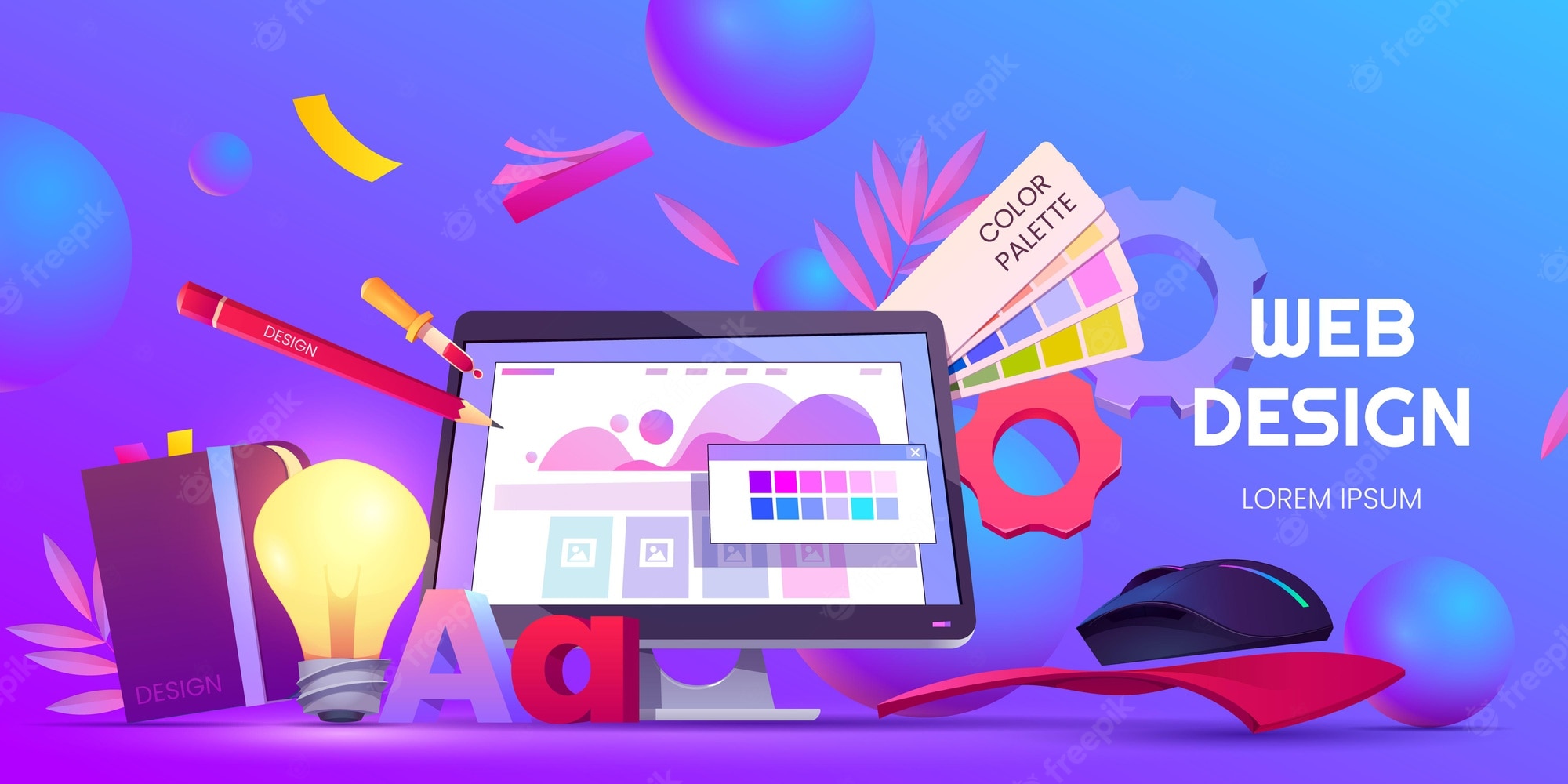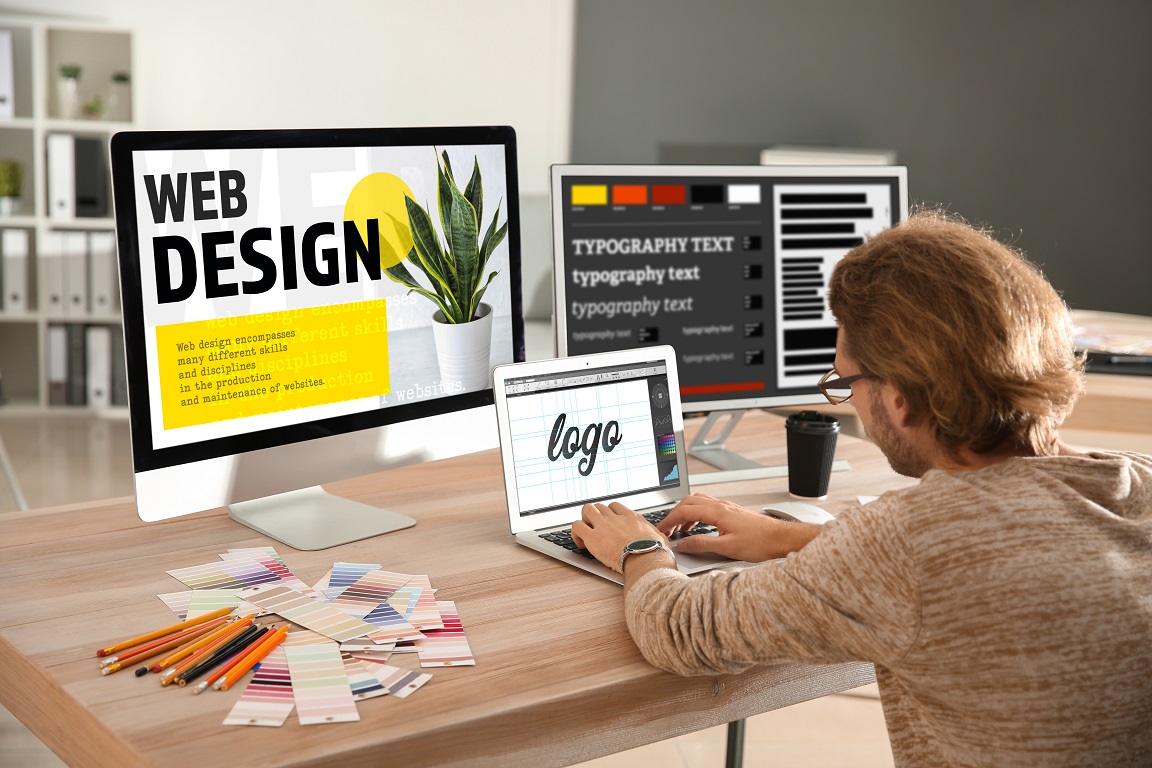Discovering Creative Fads in Web Design for Modern Businesses
The landscape of web design is continually evolving, mirroring the vibrant requirements of modern-day companies. Recent patterns highlight a choice for minimalism, bold typography, and interesting interactivity. Companies progressively focus on user experience through mobile-first principles and customized material. Furthermore, a concentrate on sustainability is gaining traction. Recognizing these trends is crucial for organizations aiming to stand out in a crowded marketplace. What ramifications do these shifts hold for the future of digital involvement?
Accepting Strong Typography
Bold typography has become a defining element in modern web design, catching focus and communicating messages with striking clarity. This fad focuses on aesthetically impactful text that improves user interaction and brand identity. Developers typically utilize extra-large typefaces and distinct typefaces to develop a power structure, leading viewers through web content seamlessly.
The strategic use of bold typography permits efficient storytelling, allowing brands to communicate their worths succinctly. It serves not just visual functions yet additionally functional ones, as it boosts readability throughout tools and screen sizes.
As web sites compete for user attention, vibrant typography stands out in a saturated digital landscape. Its adaptability enables designers to try out contrasting colors and layouts, additionally intensifying its effectiveness. Ultimately, welcoming strong typography represents a shift in the direction of more communicative and meaningful web design, cultivating a deeper connection between brands and their target markets.
The Rise of Minimalist Layout
As electronic atmospheres become increasingly messy, the surge of minimalist design offers an invigorating choice that prioritizes simplicity and performance. This design ideology remove unneeded components, enabling material to take spotlight. By concentrating on tidy lines, enough white space, and a restricted shade combination, minimalist design enhances user experience and boosts navigation.
Companies adopting this pattern goal to convey their brand message clearly and properly, fostering a feeling of tranquility and quality. The lack of diversions assists users concentrate on vital info, resulting in improved interaction and conversion prices. Additionally, minimalist style aligns well with mobile-first methods, ensuring that websites continue to be available and easy to use across different devices.
Ultimately, the increase of minimalist design reflects a wider shift in the direction of focusing on user demands and preferences, making it an effective device for contemporary companies seeking to make a long-term effect in the digital landscape.
Immersive Animations and Interactivity
While many internet designers embrace minimalist aesthetic appeals, an additional engaging trend obtaining grip is making use of immersive computer animations and interactivity. This approach enhances user engagement by developing intriguing experiences that draw site visitors into the content. Developers utilize vibrant components such as animated histories, scrolling impacts, and interactive infographics to connect complex concepts in an available manner.
These animations not just give visual passion yet additionally guide users with the navigation process, making communications more intuitive. For circumstances, hover results and computer animated shifts can encourage customers to explore further, causing raised time spent on the site.
Additionally, this trend straightens with the wider movement in the direction of storytelling in web design, where animations work as narrative devices that communicate brand messages properly. By incorporating immersive computer animations and interactivity, businesses can separate themselves in a crowded online landscape, eventually enhancing user satisfaction and brand name loyalty.
Mobile-First Layout Principles
Mobile-first layout principles emphasize focusing on user experience by making certain sites work seamlessly on smaller sized displays. This strategy integrates responsive layout methods that adapt to different tool dimensions while preserving visual integrity. In addition, it concentrates on touchscreen navigating layout, boosting use for mobile users.
Focusing On User Experience
Just how can designers properly focus on user experience in an increasingly mobile-centric globe? Emphasizing mobile-first design concepts is vital, as customers mostly involve with websites through mobile tools. This method urges designers to simplify material, guaranteeing it is navigable and easily obtainable on smaller sized displays. Key techniques consist of streamlining navigating, decreasing load times, and employing touch-friendly elements that boost interactivity. Furthermore, focusing on legible typography and instinctive layouts can significantly enhance user satisfaction. Developers must continuously gather user comments to refine their approaches, adjusting to evolving user requirements and preferences. By concentrating on these components, organizations can develop an appealing digital experience that cultivates loyalty and drives conversions, eventually lining up with the expectations these days's mobile individuals.
Responsive Design Strategies
Developers embrace responsive design methods to produce adaptive and flexible web experiences that deal with various display dimensions. This method focuses on mobile-first style concepts, making sure peak performance on smaller gadgets prior to scaling up for larger displays. By making use of liquid grids, flexible photos, and media questions, designers can maintain a natural visual identification across all systems. This approach not just enhances user interaction but likewise boosts online search engine rankings, as mobile-friendly check out this site websites are favored by search algorithms. In addition, responsive layouts enable businesses to reach a wider target market, fitting users on smart devices, desktops, and tablet computers alike. In general, carrying out these methods is necessary for modern-day web design, making sure that companies continue to be affordable in an ever-evolving electronic landscape.
Touchscreen Navigating Layout
With the rise of mobile phones, touchscreen navigation has actually become a fundamental element of web design. Developers are significantly taking on mobile-first principles to Click Here boost user experience and interaction. Web Design Agency. Effective touchscreen navigating focuses on larger buttons and instinctive motions, permitting users to interact easily with content. This technique decreases aggravation and motivates exploration, as customers can browse perfectly with their fingers. Furthermore, including swipe motions and faucet performance accommodates the all-natural actions of mobile individuals. Responses devices, such as aesthetic hints and animations, boost usability additionally by confirming actions. As touchscreens dominate user interactions, employing these style aspects not only aligns with modern expectations but additionally promotes an extra satisfying and available surfing experience for all individuals
Customized User Experiences
What makes a user feel genuinely engaged on a site? The solution frequently hinges on customized user experiences. By customizing material and navigation to specific choices, companies can develop a significant link with their target market. This personalization can be accomplished with numerous techniques, such as examining user actions, utilizing cookies, and providing customized referrals based on previous interactions.
E-commerce systems that recommend products based on searching history not only improve user experience however also enhance conversion rates. Integrating dynamic material that adjusts to the user's location or time of day can further improve interaction.
Furthermore, customized greetings or messages can make customers feel valued and recognized. As modern-day organizations strive to stick out in an affordable electronic landscape, embracing customized user experiences becomes crucial, cultivating loyalty and motivating repeat sees. Eventually, this strategy changes a typical web site right into an interactive system that resonates with its audience.
Sustainability in Web Design
As the digital landscape remains to evolve, the importance of sustainability in web design has actually gained substantial interest. Designers are significantly knowledgeable about the ecological effect their developments can have, triggering a change in the direction of eco-friendly techniques (agency for web design). Sustainable web design concentrates on enhancing sites to decrease power consumption and carbon impacts. Methods consist of utilizing minimalistic design principles, maximizing pictures, and employing efficient coding methods find out to boost loading rates
In addition, the choice of organizing service providers plays an important role; lots of designers are now selecting eco-friendly organizing solutions powered by renewable resource. By focusing on access and user-friendly navigation, lasting layouts also deal with a broader target market, boosting use. This aware approach not only charms to environmentally-minded consumers yet likewise adds to the general longevity and effectiveness of web sites. Ultimately, sustainability in web design reflects a growing fad towards accountable digital techniques that align with contemporary service values.

Regularly Asked Concerns
Just How Can I Select the Right Color System for My Internet site?
To pick the appropriate color pattern for a web site, one should take into consideration the brand's identification, target market, and psychological impact. Utilizing shade concept and screening combinations can improve user experience and aesthetic allure substantially.
What Are the very best Devices for Prototyping Website Design?
The most effective devices for prototyping internet layouts include Figma, Sketch, Adobe XD, and InVision. These systems supply user-friendly interfaces, cooperation attributes, and substantial collections, making them ideal for developers to produce and refine their principles efficiently.
Exactly how Do I Determine the Efficiency of My Web Design?
To gauge web design performance, one should examine user involvement metrics, conversion prices, and use feedback (web design company). A/B screening and heatmaps can likewise supply insights right into user habits, leading essential changes for enhanced performance and user experience
What Prevail Web Design Mistakes to Prevent?
Usual web design blunders consist of messy formats, inadequate navigating, slow-moving loading times, absence of mobile optimization, inadequate comparison, and overlooking user responses. Avoiding these mistakes improves user experience and increases overall efficiency of the web site.
How Often Should I Update My Website Layout?
A site design must be updated every 2 to 3 years, or quicker if significant changes in branding or innovation take place. Regular updates maintain the website fresh, practical, and aligned with existing user assumptions.
